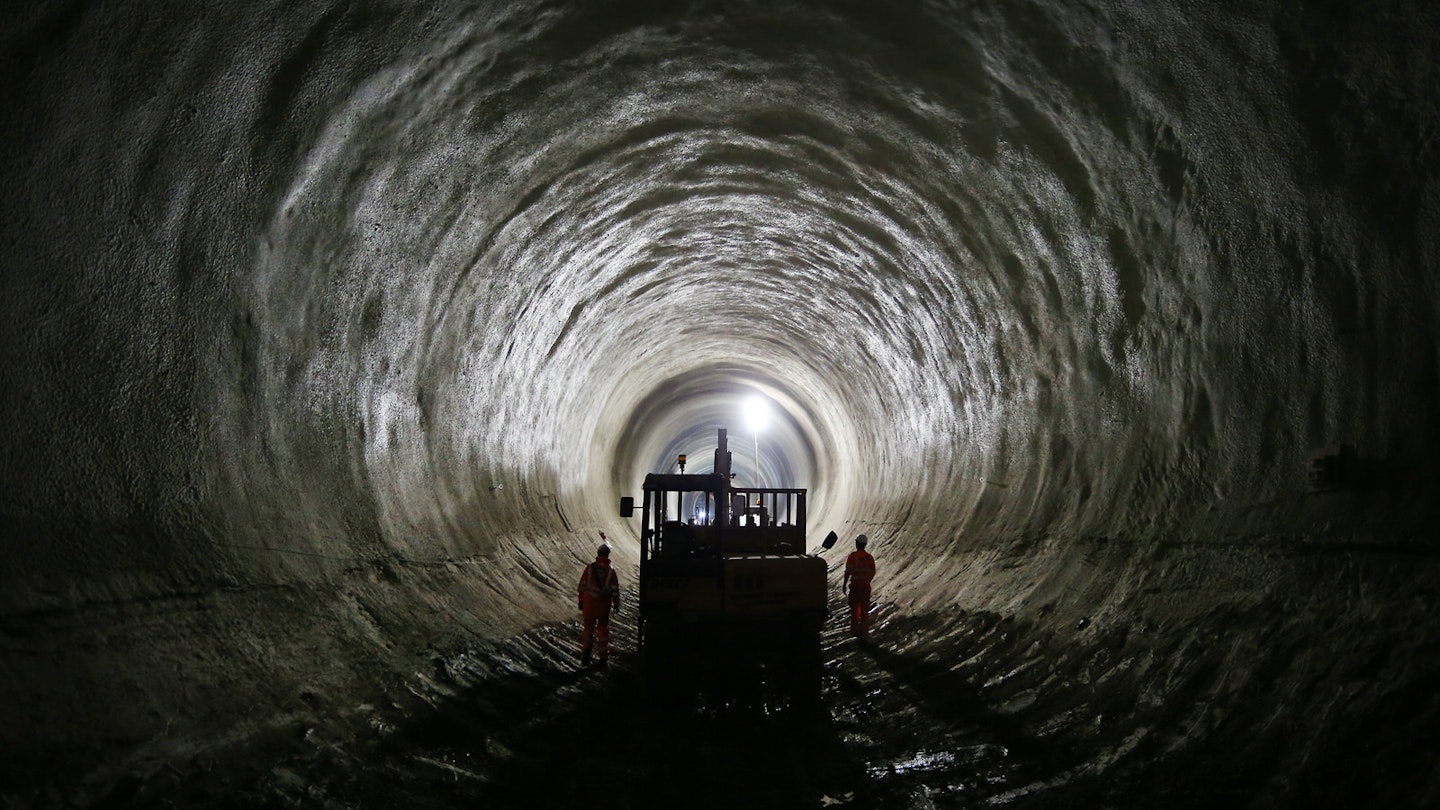Uncovering London’s Underground Secrets
Sick of scratching the surface of the city? Forget the tube: from catacombs and abandoned stations to lost rivers and buried art hubs, it’s possible to explore London’s real underground. Here’s our guide to the best sights and how to reach them.
From glimpses of another world, like the woolly mammoth that once wandered around Canary Wharf, to sobering reminders – imagine the sheer fear of following the masses down to the tube shelters as bomb sirens went off above you during WWII – London’s underground spaces present a layered tapestry of its history. War, death, plagues, hideouts, and adventure: you’ll find them all beneath modern-day London.
Ride the Postal Railway
Back in Victorian London, the Post Office had a problem. Millions of letters needed delivery, but increasingly crowded streets slowed things down. The solution? An underground rail system that air-blasted mail across the capital on tiny cars.
It was a hit, and not only for post: operators often turned down requests for a ride from those on their way home from nearby pubs. In 1927, the system was upgraded to become the world’s first driverless electric railway, trundling 6.5 miles underneath London and connecting sorting offices and postal depots from Paddington to Whitechapel.
The line stopped running in 2003, but starting in 2017, Mail Rail opened up to the public. Visitors can now take a 15-minute ride through a 1km stretch of tunnels on a specially-built passenger train as part of the new Postal Museum. Keep an eye on the website (postalmuseum.org) to find out when it’s full steam ahead.
Catacombs and the Magnificent Seven
The Victorians had challenges beyond the postal system. With a growing population, parish churchyards could no longer accommodate the increasing number of dead bodies. In response, seven large, purpose-built cemeteries were established between 1832 and 1841, each now housing approximately 250,000 souls.
Highgate Cemetery, the eternal home of Karl Marx and George Eliot, is the most renowned of the ‘Magnificent Seven’, all of which are atmospheric places. For those seeking something spookier, Kensal Green, West Norwood, and Brompton feature catacombs. West Norwood and Brompton are the easiest to visit; at West Norwood, you can book a tour (fownc.org), while Brompton runs around four open days a year where visitors can tour the burial chambers.
Ghost Stations
Although the London Underground is functional, there’s something thrilling about an abandoned station. London has a surprisingly large number of ‘ghost’ stations that used to operate as part of the network but are now unused.
Accessing them can be challenging, but the London Transport Museum offers ‘Hidden London’ tours (ltmuseum.co.uk) featuring stations like Down Street, Euston, Clapham South, and Highgate. Tickets go quickly, so ensure you’re prepared to explore these eerily empty corridors and platforms.
Art in the Tunnels
The Vaults, beneath Waterloo station (thevaults.london), have transformed into a hub for London’s arts scene, offering everything from weekly life-drawing classes to immersive adventures in Alice’s Wonderland. The curators have surprises in store, such as an underground lake you can punt across and bars to enjoy performances in a mesmerizing environment. Even the entrance through the Graffiti Tunnel is captivating.
Lost Rivers
While the Thames is well-known, rivers like the Fleet and the Tyburn still flow beneath London, subtly revealing their presence at various locations. Head to Gray’s Antiques (graysantiques.com) on Davies St to see the Tyburn gushing through the basement. For the Fleet, look for a grate in front of the (now-closed) Coach & Horses on Ray St.
If you’re eager to explore more about these hidden waterways, join a relaxing walking tour led by Paul Talling (derelictlondon.com), who shares fascinating facts about the rivers traversing London.
Walking Under Water
Among London’s many tunnels, the preserved Greenwich Foot Tunnel remains accessible. This engineering marvel runs under the Thames from the restored Cutty Sark and was built in 1902 to aid workers in the Docklands. You can walk and even push your bicycle through this impressive 370m tunnel.
War Bunkers
One of London’s most famous underground spaces, the Churchill War Rooms in Westminster, was a secret wartime hideaway. Nowadays, tourists can explore the bunker where Winston Churchill and his team planned their strategies during the war. The Map Room remains untouched from the day it was closed in 1945, preserving its historical significance.
The Relics of Crossrail
Like the city above, London’s underground never stands still, with sections being filled in, closed off, or opened up through massive engineering projects. An exhibition at the Museum of London Docklands, *Tunnel: the archaeology of Crossrail*, exhibits artifacts ranging from skulls in plague pits to a mammoth tooth and a piece of amber over 55 million years old. These treasures were unearthed during the construction of the Elizabeth Line (Crossrail), which promises to cut through the heart of London on its journey between Heathrow and Essex. The exhibition (museumoflondon.org.uk) runs until September 2017.





